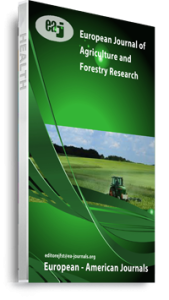Faced with climatic, soil deterioration and technical constraints, bean production is low and very variable in space and time. The selection of the best performing genotypes is faced with the presence of significant interaction between genotype x environment which significantly reduces effectiveness. An experiment following a randomized complete block design was conducted during two cultural seasons B2012 and B2013 in 3 edapho-climatic characteristic sites in eastern Democratic Republic of Congo: Luvungi, Kashusha and Bitese and aimed to analyze the interaction genotype x environment yield of six biofortify bean genotypes, in order to identify the best in these ecosystems. Germination rate, day number to the flowering stage, days number to the physiological maturity stage, harvested plants number, pods per plant number, number of seeds per pod, weight of 100 seeds were observed. The interaction was analyzed using AMMI model and typological with by the Chord similarity indices. On one hand, genotypes with specific adaptability, namely Maharagi Kalanga in Luvungi; CodMLB001 in Kashusha and BRB194 and RWK10 in Bitese. On other hand, those broad adaptations as HM21-7 for Kashusha and Luvungi and RWR2245 for Kashusha and Bitese were also highlighted. Popularization and positive exploitation the interaction on high production potential sites and the general adaptation on relatively lower potential sites improves yield by valorizing each environment and the adoption of these genotypes by farmers.
Keywords: Biofortified bean, Bitese, Kashusha, Luvungi, Selection, genotype.

